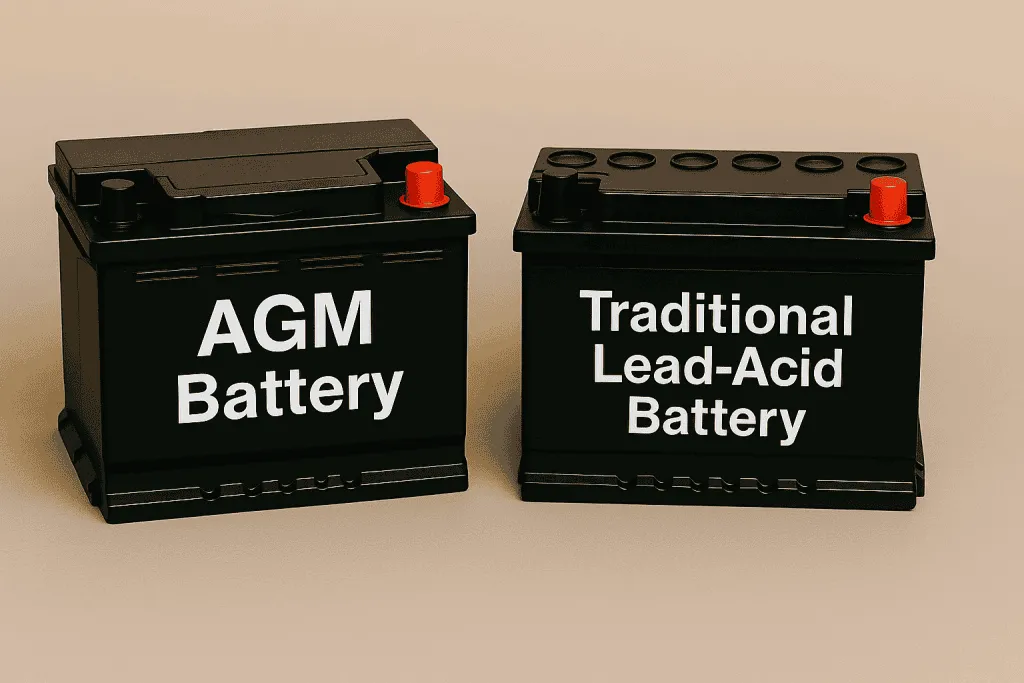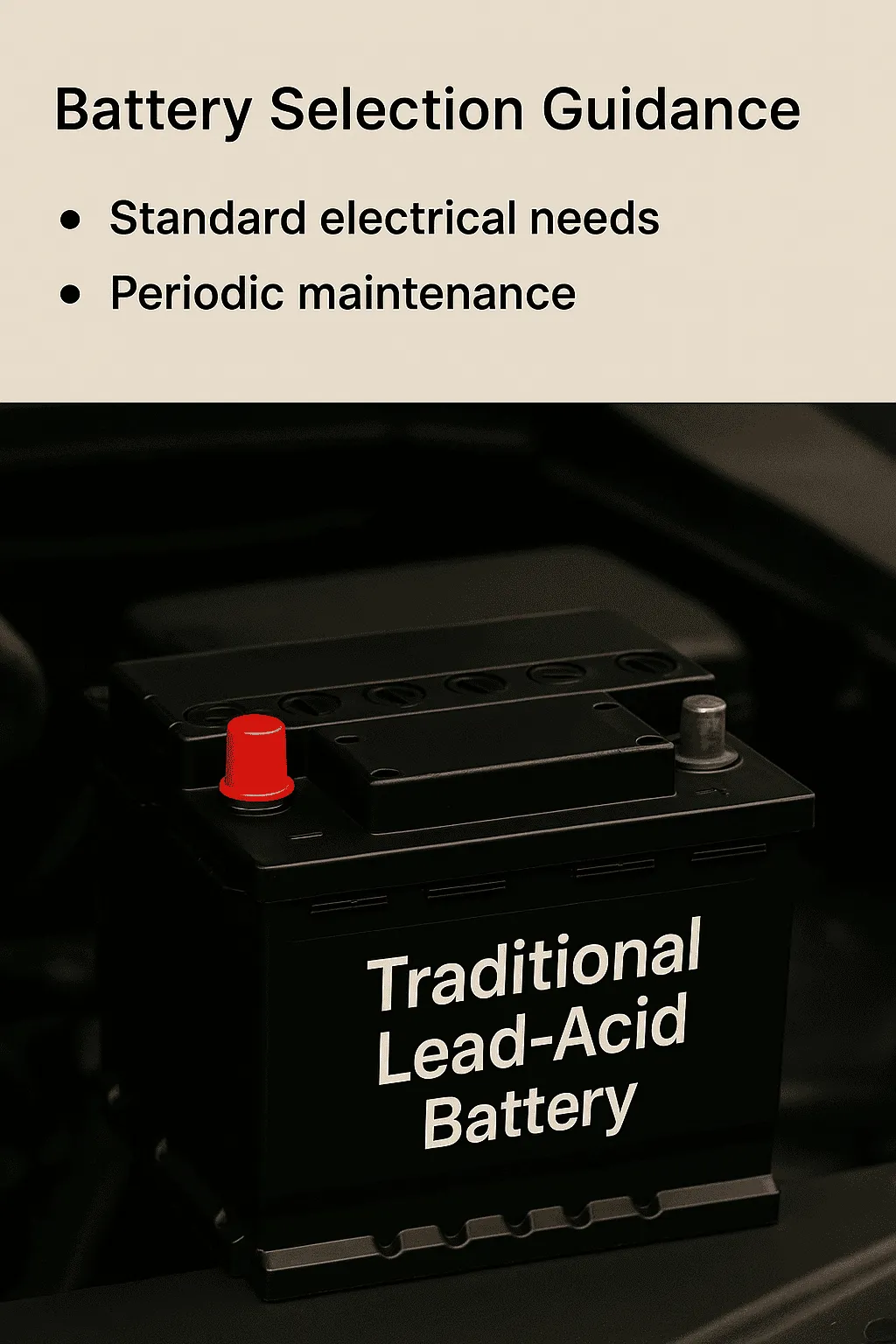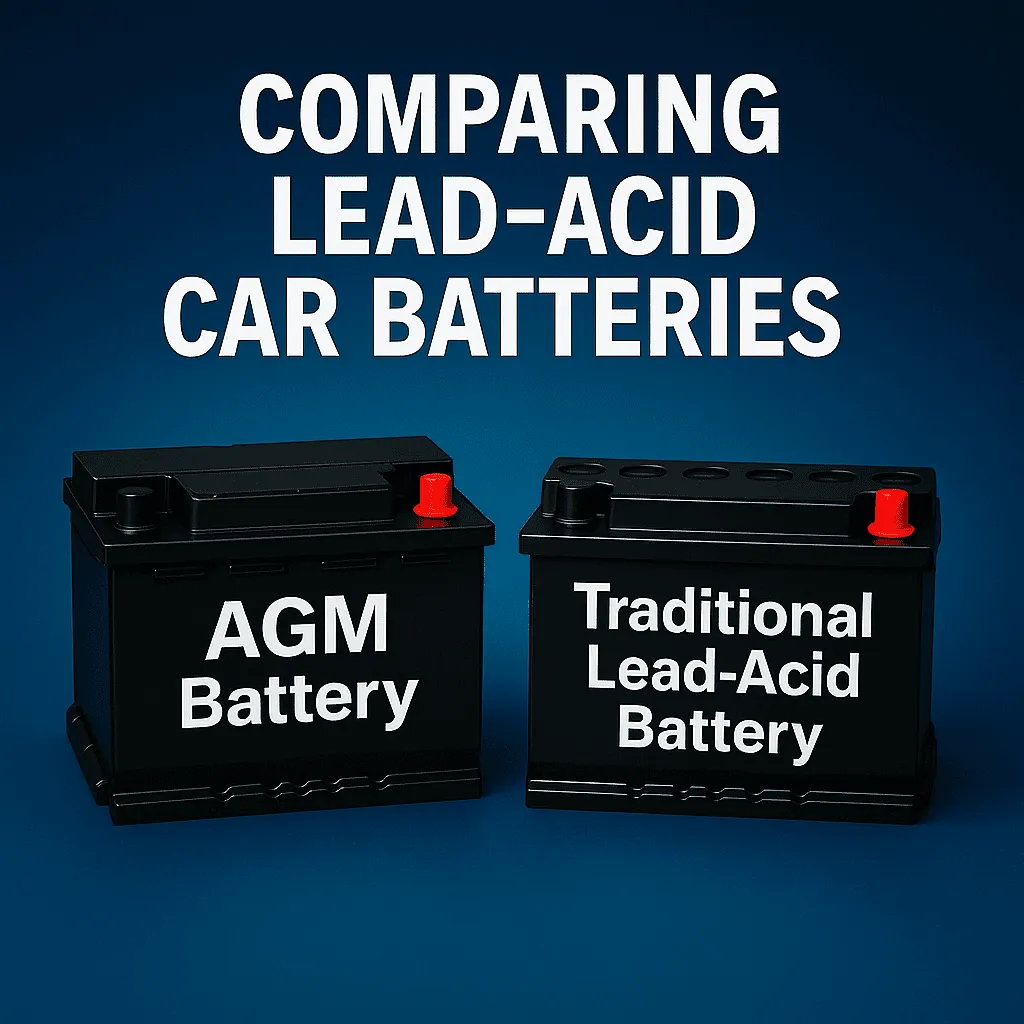Car batteries are the unsung heroes of modern motoring, powering everything from starting the engine to running lighting, infotainment, and safety systems. While there are several battery chemistries on the market, lead–acid technology remains the most common in conventional petrol and diesel vehicles.
Within this category, there are several types — SLI (Starting, Lighting, Ignition), EFB (Enhanced Flooded Battery), AGM (Absorbent Glass Mat), and conventional flooded — each designed for specific driving conditions and electrical demands.
Choosing the right one depends on your vehicle’s technology, your driving habits, and how you prioritise cost, maintenance, and performance. This guide explains the key differences, advantages, and disadvantages of each, supported by engineering insights, so you can make an informed decision.

SLI (Starting, Lighting, Ignition) Batteries
Overview:
The traditional form of lead–acid car battery, used primarily to start the engine and support basic electrical functions such as lighting and ignition.
Advantages:
- Reliable starting power, even in varied climates.
- Cost-effective, making them ideal for budget-conscious drivers.
- Widely available worldwide.
- Proven design, used for decades.
Disadvantages:
- Shorter lifespan (3–5 years).
- Limited cycling capability — not suited to start–stop systems.
- Often require electrolyte maintenance.
- Struggles to support multiple high-draw accessories.
Best For:
Older vehicles or those with minimal electronic demands where low cost is more important than durability.
EFB (Enhanced Flooded Battery)
Overview:
An improved flooded lead–acid design with enhanced plate construction for better performance and durability.
Advantages:
- Longer lifespan (5–7 years).
- Can handle twice the cycles of standard SLI batteries.
- Improved vibration resistance.
- Faster charge acceptance — ideal for frequent engine restarts.
- Tolerates occasional deep discharges.
- Compatible with start–stop systems.
Disadvantages:
- Higher cost than SLI (but lower than AGM).
- Moderate electrical load support compared to AGM.
- Some models still require occasional electrolyte checks.
Best For:
Modern cars with start–stop technology and moderate electrical demands.
AGM (Absorbent Glass Mat) Batteries
Overview:
A premium sealed lead–acid design in which electrolyte is absorbed into fibreglass mats, enabling spill-free operation and higher performance.
Advantages:
- Long service life (6–8 years or more).
- Can endure up to three times the cycles of SLI.
- Exceptional vibration resistance.
- High electrical load support for luxury and high-tech vehicles.
- Fast charging, supporting regenerative braking.
- Maintenance-free.
- Leak-proof design; can be mounted in multiple orientations.
Disadvantages:
- Higher cost than SLI and EFB.
- Sensitive to overcharging.
- Slightly heavier than other types.
Best For:
Vehicles with advanced electronics, high accessory loads, or harsh driving conditions.

Conventional Flooded Lead–Acid Batteries
Overview:
Traditional “wet cell” design with liquid electrolyte, used in both SLI and EFB formats.
Advantages:
- Lowest cost among lead–acid types.
- Proven reliability with over a century of use.
- Easy to source and replace.
Disadvantages:
- High maintenance — regular electrolyte checks required.
- Spill risk — must be kept upright.
- Lower vibration resistance.
- Slower charging rates.
Best For:
Basic petrol or diesel vehicles in mild climates where cost is the main concern.

Comparative Summary
| Feature | SLI | EFB | AGM | Flooded |
| Lifespan | 3–5 years | 5–7 years | 6–8 years | 3–5 years |
| Cycling Capability | Low | Moderate | High | Low |
| Cost | Low | Medium | High | Low |
| Start–Stop Compatible | No | Yes | Yes | No |
| Maintenance | Periodic | Occasional | None | Regular |
| Electrical Load | Low | Moderate | High | Low |
Environmental Considerations
All lead–acid batteries are over 95 % recyclable. AGM designs offer reduced spill and gas emission risk due to sealed construction. Whatever the type, responsible recycling at authorised centres prevents environmental harm and allows material recovery.

Frequently Asked Questions (FAQs)
Conclusion
Lead–acid batteries remain central to automotive power systems, but their designs vary greatly. SLI batteries are budget-friendly for basic needs, EFB offers balance for start–stop systems, AGM delivers premium performance in demanding conditions, and flooded types provide the lowest cost but require the most maintenance.
References:
Albers, J., & Meissner, E. (2017). Automotive absorptive glass-mat lead–acid batteries. In D. Aurbach & B. Scrosati (Eds.), Lead–Acid Batteries for Future Automobiles (pp. 185–211). Elsevier. Science Direct
2. Offer, G. J., Howey, D. A., Contestabile, M., Clague, R., & Brandon, N. P. (2013). A review of current automotive battery technology and future prospects. Proceedings of the Institution of Mechanical Engineers, Part D: Journal of Automobile Engineering, 227(5), 761–776. Sage Journals
3. Rand, D. A. J., & Moseley, P. T. (2017). Lead–acid batteries for future automobiles. Elsevier. eBook ISBN: 9780444637031.

